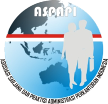MAIN MENU
Author Guidelines
Jurnal Pendidikan Ekonomi, Perkantoran, dan Akuntansi - JPEPA is a journal that contains scientific articles in the form of academic studies sourced from research results, literature studies and other studies in accordance with the rules of scientific writing. Articles published in this journal must follow the provisions of the scientific rules set by the board of editors. Before publication, all articles must follow the editor and review stages. The journal is published by the Faculty of Economics, Universitas Negeri Jakarta.
GENERAL GUIDELINES
- Articles are guaranteed authenticity by the author and have never been published before to other journals/proceedings.
- The contribution to the development of SCIENCE AND Technology is measured from the novelty of the findings/ ideas / results of thought by prioritizing on the latest sources of primary libraries that are used in the last 10 years.
- Articles must be empirical research (more prioritized) or theoretical studies and conceptual thought results by listing propositions, arguments, and research plans for proof of such propositions. The sharpness of analysis and synthesis is done critically takes precedence.
- The review process is conducted blind-review with peer group system, which is strengthened by qualified partners in their field.
- Articles are written in defined context rules and the editing team reserves the right to revise the context style with notes not changing the substance of the article.
- Questionnaires and other instruments. Article scripts that use research with primary data or experiments must also include questionnaires used.
- Authors are required to submit data processing results as well as original table and image files stored in soft copy or C.
- Articles submitted online through the website of Jurnal Pendidikan Ekonomi, Perkantoran, dan Akuntansi with the address https://journal.unj.ac.id/unj/index.php/jpepa/about/submissions. Please previously the author/sender of the article registers in advance at the address: https://journal.unj.ac.id/unj/index.php/jpepa/user/register. In addition, articles should be equipped with correspondence address, institution, and email. If you already have an Orcid ID, Scholar ID, Scopus ID or something else, please include it.
- Possible results about the assessment of the article may be: (a) Accept; (b) Revision Required; (c) Resubmit for Review, (d) Resubmit Elsewhere, and (e) Decline.
The Terms of Systematics Writing:
1. Article in the form of research results:
- Title: Brief, effective and reflective of the manuscripts (maximum 12 words), font size 14, bold and centralised, capitalise each content word in the title;
- Authors Name: The author's name is written without a title, the origin of the institution, country, and email address all in font size 12;
- Abstract: Abstract is written in English and Bahasa Indonesia. The abstract contains a description of the research objectives, methods used, and research results. Abstract is written in a concise, compact and written in one paragraph (maximum 150 words);
- Keywords: Keywords contain basic ideas or concepts that represent the field under study. Keywords max 5 ideas or concepts;
- Introduction: This section contains background research, research issues or research objectives;
- Literature Review: This section contains a summary of theoretical studies related to the problem under study;
- Research Methodology: This section contains the design or research design undertaken. In this section at least contains about the type of research, subject / object research, techniques / instruments data collection and data analysis;
- Results and Discussion: This section contains results of data analysis, instrument testing and hypotheses (if any), answers to research questions, findings and interpretation of findings;
- Conclusions and Recommendations: Presenting conclusions of research results and suggestions submitted by researchers;
- References: Contains the sources referred to in article writing, only the sources used are listed in the references.
2. Articles in the form of the result of thinking, scientific analysis and study of theory:
- Title: Brief, effective and reflective of the manuscripts (maximum 12 words), font size 14, bold and centralised, capitalise each content word in the title;
- Authors Name: The author's name is written without a title, the origin of the institution, country, and email address all in font size 12;
- Abstract: Abstract is written in English and Bahasa Indonesia. The abstract contains a summary of articles that reflect an overview of the issues discussed in the article and the things being criticized and written in a paragraph (a maximum of 200 words).;
- Keywords: Keywords contain basic ideas or concepts that represent written fields. Maximum keywords 5 ideas or concepts;
- Introduction: Describes the importance of the issues discussed along with the background, addresses the issues discussed and the purpose of the discussion;
- Discussion: This section contains a review of the issues being discussed. Its contents can include analysis, theoretical arguments on the issues discussed. A written sub-section can adjust to the issues being discussed
- Conclusion: Contains the author's conclusions on the issues discussed, including suggestions or alternate attitudes if any;
- References: Contains the sources referred to in article writing, only the sources used are listed in the reference, use references manager example Mendeley or Zotero.
Terms of Writing Format:
- Articles can be presented in English or Indonesian;
- Articles submitted online through the website of Jurnal Pendidikan Ekonomi, Perkantoran, dan Akuntansi with the address https://journal.unj.ac.id/unj/index.php/jpepa/about/submissions. Please previously the author/sender of the article registers in advance at the address: https://journal.unj.ac.id/unj/index.php/jpepa/user/register.
- Articles that unpublish will not returned;
- Length of writing between 10-15 pages (include references) and written on A4 size paper with space 1;
- Font type used: Times New Roman size 12;
- Each table or picture is numbered, title, corresponding to table and image contents, and citation source (if any). The source of the quotation is written below the picture or table. The table title is written above the table and the title of the image is written underneath the image;
- All pages including tables, attachments and bibliography are numbered;
- The source of the quotation in the text is written between the opening brackets and the closing paraphrase that mentions the author's final name, year, and page number if deemed necessary.
Example:
- If the quotation comes from one source: (Wibowo, 2012), (Purwana, 2015), (Gurry & Yulk, 2006), (Case, et.al., 2012) or (Wibowo, et al. , 2015);
- If the quotation comes from two sources with different authors: (Bush, 2009; Choleman & Tracy, 2010);
- The reference is written alphabetically in accordance with the family/last name (without an academic degree), both foreign authors and Indonesian writers with examples as follows:
- Journal:
Yelle, L.E. (1980). Industrial Life Cycles and Learning Curves: Marketing and Production Interaction Industrial Marketing Management, 9 (4), 311-318.
Darmarika, I. (2006). Pembangunan Manusia Sebagai Sarana Pemberdayaan Masyarakat Miskin.Jurnal Economia,2(1), 1-11.
- Research report:
Sebayang, D, et al. (2012). Tracer Studi Fakultas Ekonomi Universitas Negeri Yogyakarta 2016. Laporan Penelitian. Jakarta: LEMLIT UNJ.
- Book:
Wibowo, A. (2011). Pendidikan Kewirausahaan. Yogyakarta: Pustaka Pelajar.
Purwana, D. (2016). Studi Kelayakan Bisnis. Jakarta: Raja Grafindo.
Ebel, R.L. & Frisbie, D.A. (1991). Essential Of Educational Measurement (5th Edition). New Delhi: Prentice-Hall, Inc.
Bush., et.al. (2012). Leadhership New Age (9th Edition). Boston: Addison-Wesley.
- Internet:
White, H. (2007). Problem-Based Learning in Introductory Science Across Disciplines.Diakses dari http://www.udel.edu/chem/white/finalrpt.html pada tanggal 6 Januari 2011.
Table and Figure (Graph)
- Table and figure should be efficiently presented (only for table and figure with the result of data) and are placed on the article. Table and figure presented on the appendix are to show the data processing.
- Table and figure must be numbered in sequence and be given a title that reflects its contents.
- Reference of table and figure must be mentioned on the article.
- Author should mention on the article where table and figure are attached.
- Table and figure should be able to be interpreted without referring to the article.
- Source of table and figure should also be presented.
- Figure must be prepared in a printable version.
Download link the Article Template :
*Please note that all the articles publish in JPEPA does not represent the attitude and / or opinion of the Editorial Board. The responsibility of the content or effect of the writing remains on the author.








